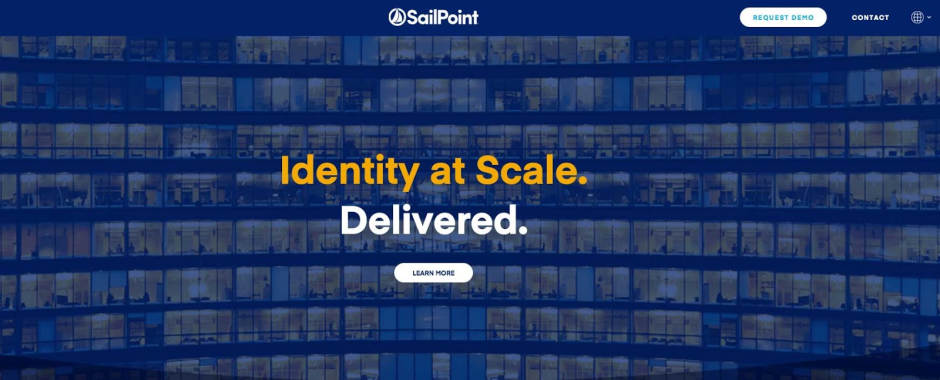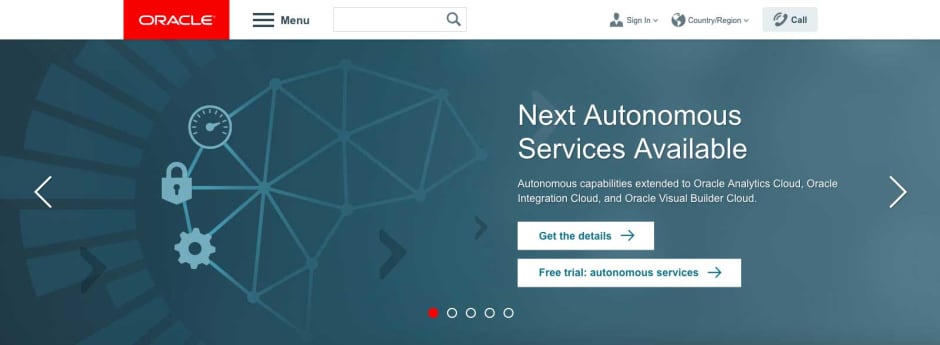What is IAM? #
Identity access management (IAM) or simply put, identity management, is a category of software tools that allows businesses of all sized to generally manage the identities and access rights of all their employees. This is a broad characterization, and is intentionally so: There are many different tools that fall under the umbrella of identity management software, or identity access management.
One of the main capabilities of any such identity management software is that it allows enterprises to develop rules for defining digital identities for their users for the right circumstances and in a timely fashion. You can easily set rules for access, both to online platforms and for the office itself, if doors are equipped with modern access control. The greatest asset, though, is that with identity and access management you can set and monitor all these permissions from the comfort of your computer, on an online platform. You don’t need to be passing out badges, or manually going around the office to reassign users and let them know of their updated permissions. The best identity management software will have built in notifications, and a whole slew of capabilities that any administrator can operate from the online interface.
As mentioned, though IAM is more of an umbrella term that covers a slew of different identity management software tools. The best IAM providers include authentication, authorization, and file storage methods such as:
- Single sign-on. This refers to centralizing the process of signing on to all apps related to businesses. With SSO, IT admins for a business can regulate their company users’ access to any company-related apps, set permissions, and easily provision and deprovision employees.
- Multi-factor authentication. MFA provides a crucial second layer of security past normal passwords, which can easily be shared or compromised. MFA consists of either one-time codes generated by apps on your phone, or physical keys like Yubikeys that you plug into your machine, and grant you access when you attempt a login.
- Data storage on-site or in the cloud. Another important tool for identity management. Most small and medium sized companies don’t have the capacity to have a server rack on site, so outsourcing that task to an identity access management provider helps both for security and for operational costs.
- Role based access. A relative to single sign-on functionality, these tools allow administrators to set permissions for access on the identity management software based on the level and degree of access that a particular employee has. The better the software, the more granular the permissions can be set.
We’ll now take a look at some of the biggest IAM tools providers, and give advantages, disadvantages, and use cases for each of them.
#1 IBM #

IBM IAM
What Are the Features? #
IBM’s IAM features include design, strategy, and implementation access management tools based on cloud identity services. Its comprehensive solutions consists of automated access management to help enterprises manage the complete identity cycle. IBM provides multi-factor authentication services and insider threat protection.
Specific IAM features include:
- User provisioning
- Access management
- Enterprise single sign-on
- Multi-factor authentication
- User activity compliance
- Identity governance
- Managed security services
Specific IAM products include:
- IBM MaaS360 with Watson (AI): a cognitive unified endpoint management (UEM) method for consolidated management of phones, laptop and desktop computers, wearable devices, and IoT devices

IBM MaaS360
- IBM Security Access Manager: a user-friendly tool to integrate web, mobile and cloud access, and provide security at the same time, including single sign-on, integrated access management control, identity federation and IBM Verify, a mobile MFA solution.
- IGI (Identity Governance and Intelligence) is an enterprise-based access management tool covering user lifecycle management and access risk assessment, as well as mitigation, certification, and password management. IGI also included analytics and reporting features.
Why Does It Make for a Choice IAM Tool? #
IBM is a choice IAM tool because it offers a value-for-money solution that transforms the user business model, allowing him to achieve business objectives and improve overall cost efficiency. IBM is an industry leader with both tradition and innovation capabilities. Therefore, many enterprise businesses choose it as the best all-in-one identity access management tool to reduce risks of insider threat and identity fraud, manage regulatory compliance and automatically improve collaboration between users.
What Businesses Are Suited to Use This Tool? #
Businesses that need to design and implement complex IAM strategies and need strong support along the way would be the best suited for this tool. Since IBM provides strategic, as well as deployment solutions, if an enterprise has an IAM problem and doesn’t know where to start to solve it, IBM’s IAM tool can help. The powerful regulatory compliance elements make it the preferred choice for enterprises that must work within a strict regulatory framework.
#2 Sailpoint #

Sailpoint
What Are the Features? #
Sailpoint has four basic features called:
- IdentityIQ: On-premise Identity Governance

IdentityIQ
- Centralized access for all data and users from one platform
- Access request and approval from any device
- Automated compliance control and audit reports
- IdentityNow: Identity-as-a-service (IDaaS) Identity Governance
- Password synchronization across applications
- Access to multiple type of applications (for example: Zendesk, Skype, SAP, Salesforce, Amazon Web Services) from one platform
- Unified mobile experience
- Security IQ: Identity Governance for Files
- Intuitive dashboard for user access control
- Prevents against data leakage of sensitive files (PII, PHI, and PCI)
- Analytics tool with real-time insight
- Identity AI
- Identity review over time
- Abnormal behavior alerts
- Peer groups monitoring
- Create risk models with machine learning
Why Does It Make for a Choice IAM Tool? #
Since enterprises are increasingly moving to the cloud, Sailpoint is an eco-friendly model. It’s a powerful IAM tool against data breaches and data leakage. Its capacity to work with large amounts of data provides a competitive advantage in a world where online data is getting bigger and bigger, as well as it improves security for global teams.
What Businesses Are Suited to Use This Tool? #
Sailpoint is best suited for large-scale identity solutions that own a large amount of files and need to store is securely. It’s appropriate for businesses in need of complex analytics tools that can be integrated with the major sales, marketing, and communication applications. Sailpoint is specialized in identity and access management for the healthcare industry and for federal identity solutions.
#3 Oracle #

What Are the Features? #
Oracle Identity Management consists of two suites, 12c and 11g. 12c is more like a basic model, while 11g includes multiple advanced features. The features of 12c are Identity Governance, Access Management, Unified Directory, and Internet Directory.
Oracle Identity Management 11g Solutions include:
- Access Management
- Mobile and Social Access Service
- Identity Federation
- Access Portal Service
- Adaptive Access Manager
- Entitlements Server
- Web Services Manager
- Security Token Service
- API Gateway
- Enterprise Single Sign-On Suite Plus
- Directory Services
- Unified Directory
- Internet Directory
- Virtual Directory
- Directory Server Enterprise Edition
- Authentication Services for Operating Systems
- Identity Governance
- Identity Manager
- Identity Analytics
- Privileged Account Manager
- Mobile Solutions
- Mobile Security Suite (address security issues related to a mix of BYOD and corporate owned models)
- Oracle - Sun
- Waveset (integrates lifecycle management with identity auditing capabilities on role level)
- OpenSSO (web access management, federated single sign-on, and web services security)
- Security Toolkits
- Security Developer Tools (cryptographic tools).
Each of the above features provide sub-features that can be integrated with various stakeholders, including users, developers and partners, ensuring a 360-degree view of identity and access management.
Why Does It Make for a Choice IAM Tool? #
Oracle IAM system has strong security capabilities for web, mobile, and cloud access, as well as highly customizable software architectures. This aspect allows for enterprises to rely on the system’s built-in features, at the same time being able to choose from multiple variations that can be applied on enterprise level. In a nutshell, Oracle has an excellent flexibility in terms client control over the system’s features and data.
What Businesses Are Suited to Use This Tool? #
Oracle IAM tools are effective for financial companies, enterprises in need of advanced business analytics tools, B2B solutions, and workforce planning. It is also serves as a data management tool and a data integrator for robust solutions. Enterprises in need of a web-based ready-made powerful architectures that can implemented without excessive effort on the client are best suited to use this tool.





